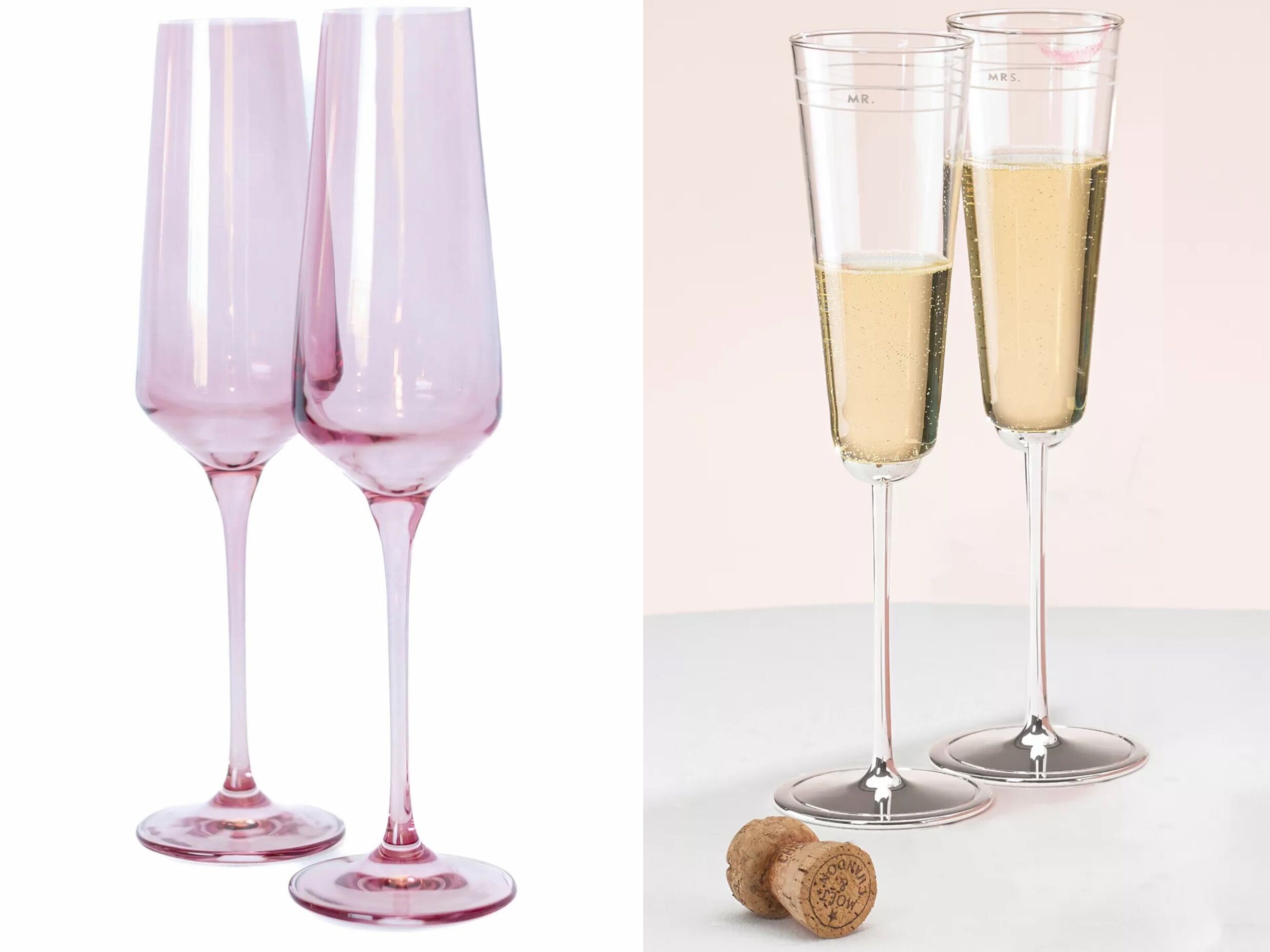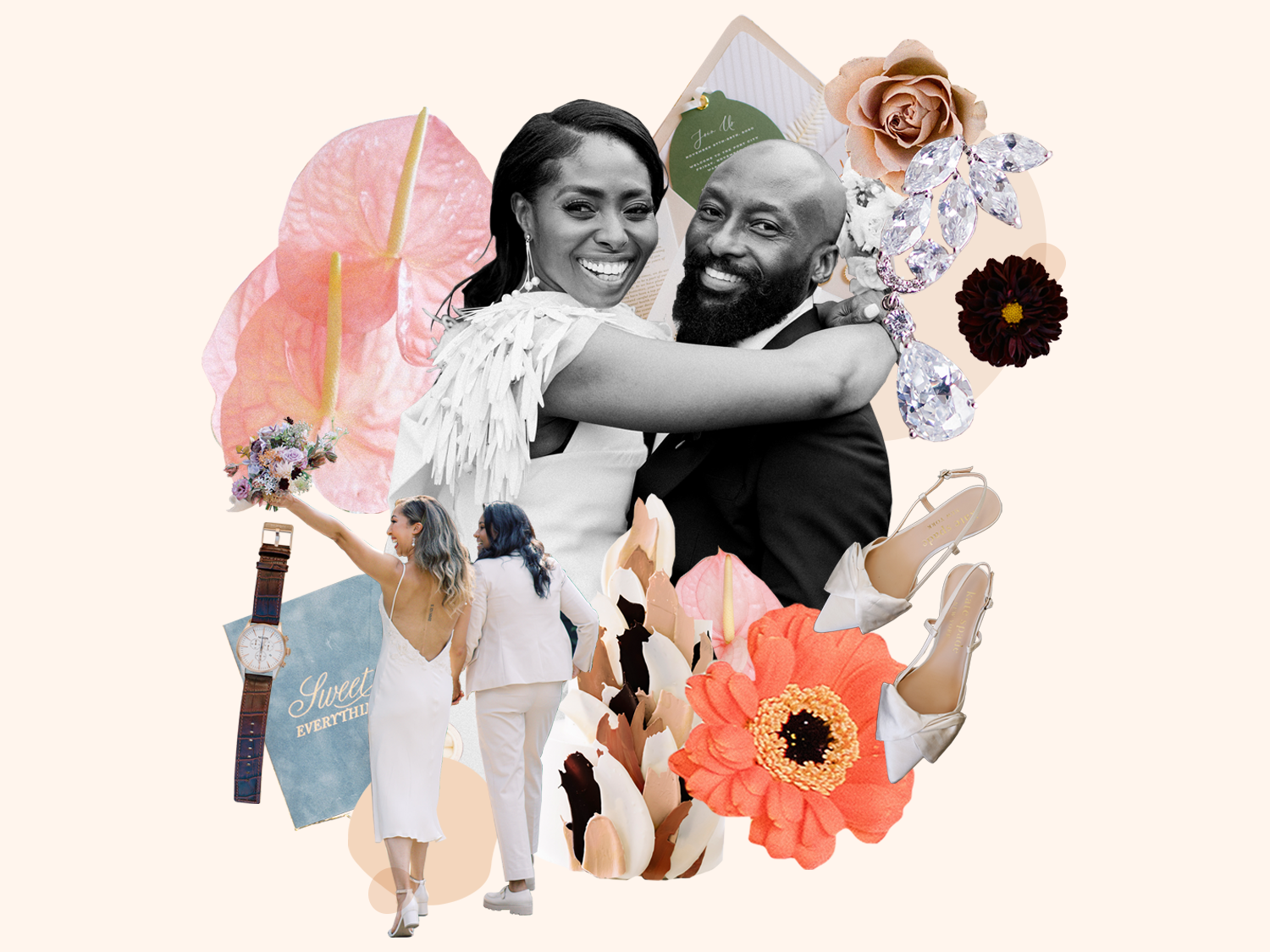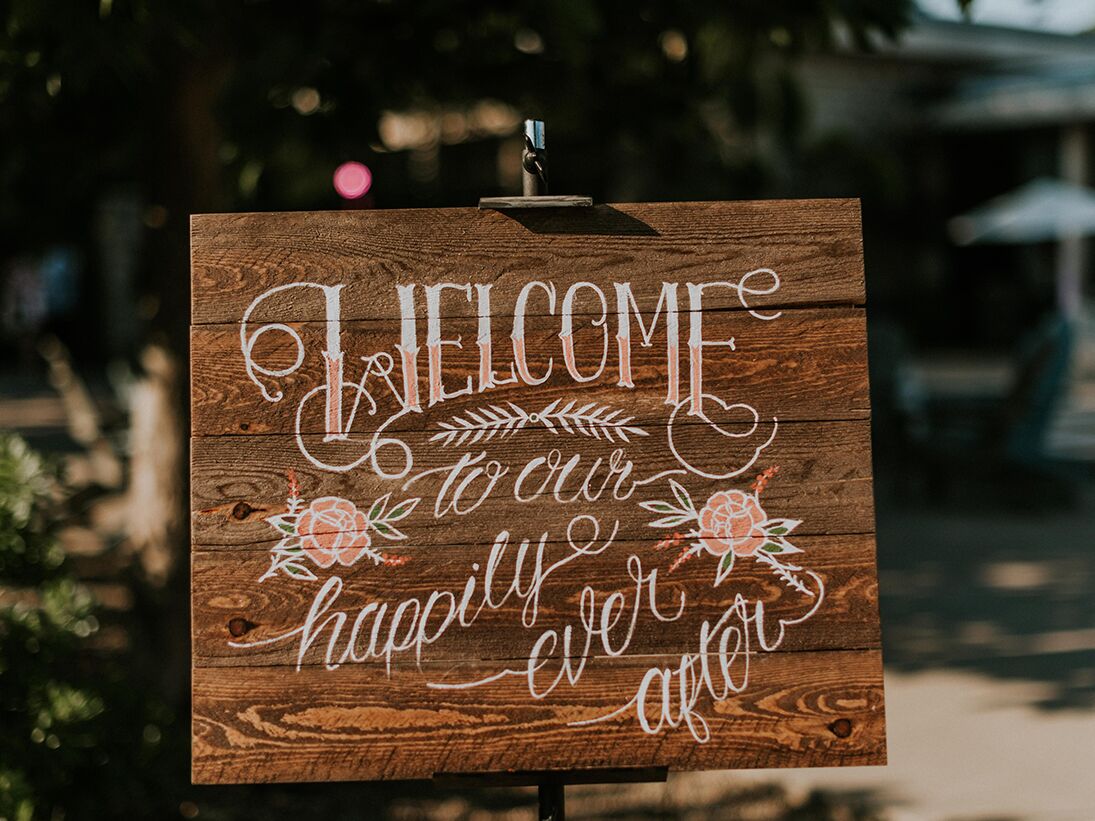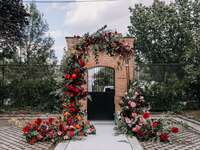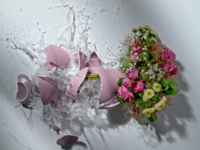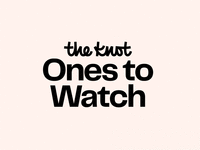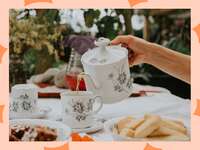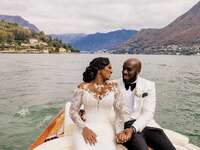How to Find & Hire Your Wedding Florist in 8 Steps
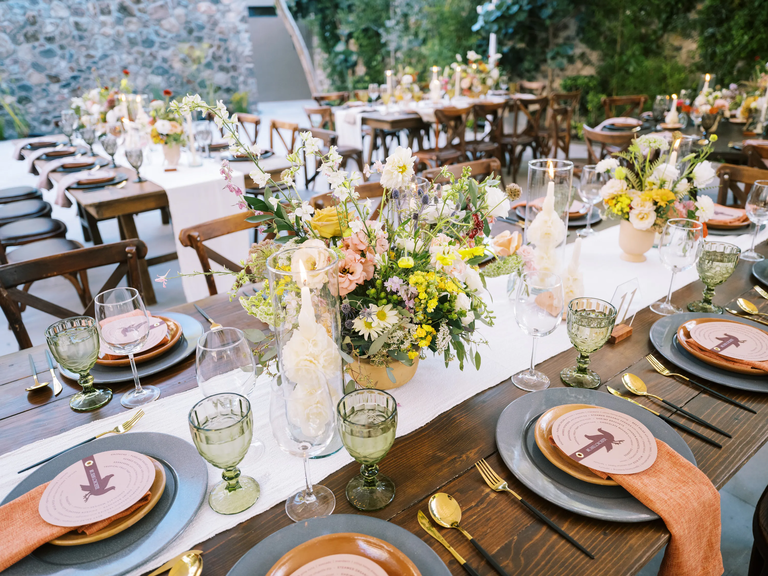
Flowers are the heart of your wedding decor because they have the power to transform any space by adding texture, color and liveliness. Hiring a professional florist is the key to doing this, and if you're wondering how to find a wedding florist, you've come to the right place. Just like any wedding pro, there are a few things to note before starting your search for a wedding florist on The Knot Vendor Marketplace and signing a contract. Here's a step-by-step guide to finding your florist, including when to book a florist for your wedding and what to know before your first meeting.
How to find a wedding florist: When to Book | What to Look For | Find a Florist Near You | How to Coordinate After Booking
When to Book a Florist for Your Wedding
We recommend starting to research wedding florists about 11 to 12 months before your big day, with the goal of signing a contract between 9 and 10 months pre-wedding. Basically, as soon as you've booked your wedding venue and have officially set a date, you can start researching other vendors, including your florist. The earlier you can secure a florist, the better, especially if you're getting married during peak wedding season, you want to include elaborate flower arrangements or get your hands on some of the most popular wedding flowers.
What to Look for in a Wedding Florist
Design compatibility is important, but that's not the only thing to consider when you're choosing a florist. Here's what else to look for and how to find a florist for your wedding, step by step.
1. Establish your wedding flower style.
Floral designers are artists—each one has their own methods and techniques. Some traditional florists specialize in tall, ornate centerpieces, while modern wedding florists are experts at minimalist arrangements and boho wedding florists are all about loose, oversized designs. Because of this, it's important to find a florist that not only fits into your wedding budget (more on that in a sec) but also your wedding style. Spend time looking at photos of wedding flower trends, bouquets, boutonnieres and centerpieces to determine your style and zero in on exactly what you're looking for. Finally, familiarize yourself with some of the most common wedding flower arrangements and wedding flower ideas so you'll be able to talk shop with your florist.
2. Determine what you'll need.
Not only does each florist specialize in a different design style, but the services they offer will vary from business to business, too. It's important to find a vendor who's aligned with your specific needs, whether you want someone very hands-on or you simply need a florist to provide the basics. For example, do you want a florist who'll not only build your centerpieces but also help curate the look of your reception tables and place settings? Look for a florist who offers event design and styling in addition to their flower design services. Already have a wedding planner or venue coordinator taking care of the extra details? Then a regular florist will likely do the trick. Figure out which type of vendor is the best fit—this will allow you to narrow your search and help determine your budget.
Next, think about the specific flower arrangements you want for your wedding. If you're dreaming of elaborate flowers hanging from the ceiling above the dance floor, it's important to look for a florist who has experience designing large-scale installations. If you need to add special cultural elements, like a mandap or chuppah, choose a florist who understands the importance of those details.
3. Create your ballpark budget.
It's important to have a general wedding flower budget in mind before you start meeting with vendors. Your final cost will depend on a lot of things (seasonality, design needs, flower types, etc.), but in general, decor and flowers should amount to about 10% of your overall wedding budget. According to The Knot 2023 Real Weddings Study, the average wedding florist cost last year was $2,800—but again, that number varies widely depending on your wedding location, guest count and other details. Taking the rest of your wedding details and priorities into consideration, decide how much you can realistically set aside for flowers (and if loved ones are contributing financially, who's paying for the wedding flowers). Then, you can reduce or increase your spend depending on the quotes you receive from florists and what's most important to you. For example, if you're dead-set on having peonies for a November wedding (when the flowers are a lot more difficult to come by), plan to build in a little extra cash. And don't forget to account for extras like setup and breakdown charges, taxes and tips.
4. Start your florist search.
You've done the prep work and now it's time to actually double-down on finding a wedding florist. As with all wedding pros, you want a florist who's reliable, capable of understanding your vision and within your price range. Start by browsing a list of wedding florists near you on The Knot Vendor Marketplace—you can read reviews, see photos of their previous work and request more info from vendors all in one place. Next up? Check out real wedding photos from events that took place in your wedding location to find potential florists in that area. Finally, never underestimate the power of networking and word of mouth. Ask your newly married friends if they have any florist recommendations, or reach out to the rest of your wedding vendor team (like your photographer, wedding planner or venue coordinator) for their list of pros they love working with.
5. Schedule a consultation.
Whether your initial consultation takes place in-person or over the phone, speaking directly with potential florists can help you quickly understand whether or not someone will be a good fit. Plus, if you're visiting their studio to look at sample arrangements, you'll get the chance to see their designs and their workspace IRL. After you've had a quick chat about availability and starting price points, set up appointments with your shortlist of florists (we recommend just one or two at first). So what do you need to know before meeting with a wedding florist? Come to the consultation prepared with a list of questions for your florist and the following information:
- Your wedding date
- Your wedding venue
- An estimated guest count (including number of wedding party members)
- Wedding color scheme or vibe, flower ideas and must-haves
- A list of your other confirmed wedding vendors
7. Review design proposals.
After your consultation, the florist will send you a design proposal or mood board outlining their ideas and estimated cost. If you want to schedule a second meeting or follow-up call to make changes to your florist wedding package, now is the time to do it before officially signing a contract. If you're still crunching numbers, ask the florist to prepare a few different proposals: a "best-case scenario" where you're able to splurge a little more and a "bare-minimum scenario" that focuses on just the essentials. From there, you can work with them to create exactly what you want—for example, if reception decor is a big priority for you, perhaps you spend more on the centerpieces and downsize the bridesmaid bouquets instead.
8. Make the final decision.
Sit down with your partner to review your proposals and determine your best wedding florist match. When you're completely satisfied with the proposal, the florist will turn it into a formal contract, but make sure to read everything (and we mean everything) in the contract before adding your signatures. Pay attention to the florist's payment timeline, delivery requirements, weather policy and cancellation clause, in addition to double-checking that all of the arrangements you're ordering are explicitly outlined in the wedding florist contract. Once the contract is submitted, pat yourselves on the back for making progress on your planning checklist.
How to Find a Wedding Florist Near You
If the generic search results for "wedding florist near me" aren't quite cutting it, The Knot Vendor Marketplace will help you fine-tune a list of pro florists until you find exactly who you're looking for. By using our built-in filters, you can sort florists by location, services offered, price point and rating level. You can even filter for award-winning vendors, including The Knot's Best of Weddings and Hall of Fame, to find the best of the best wedding florists. Finally, our filters let you search for businesses that are woman-owned, Black-owned, LGBTQIA+-owned and more.
How to Coordinate With Your Florist After Booking
The hard work of finding your wedding florist is over (phew!), but you'll want to check in a few more times leading up to the wedding day. Stay on track with these tips.
Show, don't tell, your wedding vision.
By now, you've shared your basic thoughts with your florist, but they may need some further direction once the real planning gets underway. Your florist isn't a mind reader, so remember to be very clear about what you want (and more specifically, what you absolutely don't want). Images are often more telling than words—verbal descriptions are open to interpretation and sometimes misunderstood, which is why it's important to share visual inspo, too. Make a wedding mood board, send your florist photos of your wedding invites and share fabric samples of your table linens so they can get a sense of the whole vibe.
Give your florist freedom to be creative.
As much as we love gathering wedding inspiration, it's not realistic to expect your florist to create an exact replica of another florist's work. When you're collecting photos for inspiration, think of those ideas as guidelines. The purpose of sharing photos with your florist is to convey the color scheme, level of formality and general direction for standout details, like a ceremony arch or flower-covered cake table. Your florist will take those ideas into consideration while putting their own artistic touch on the final product. Remember that they may need to make some adjustments depending on flower availability and your budget (for example, swapping out pricey blooms for similar affordable wedding flowers when possible). You hired your wedding florist because you loved their work for other clients, so trust that they'll work their magic for your wedding day, too.
Designate a wedding day point-person.
Your florist will be responsible for bringing their own wedding day team. But since you'll be busy getting ready, it's a good idea to designate someone on your end to handle any last-minute vendor questions or hiccups (which, hopefully, there are none). If you're working with a wedding planner or venue coordinator, this will be their responsibility, but if not, you can enlist the help of a trusted friend who isn't in the wedding party. Tasks might include being on standby to oversee the flower delivery, double-checking the table layouts or tipping the florist with an envelope of cash. Share the plan (and a finalized wedding day timeline) with your florist ahead of time so everyone's on the same page.

